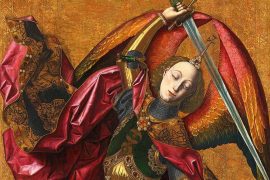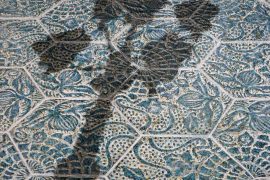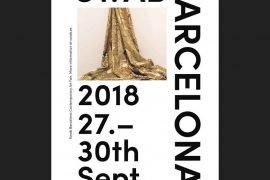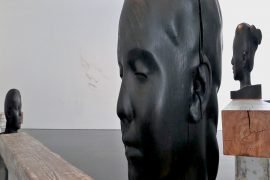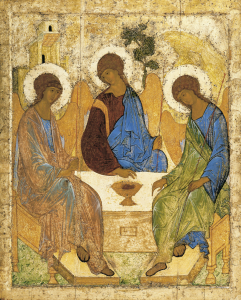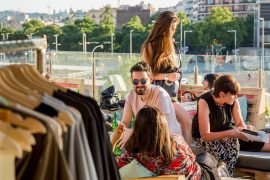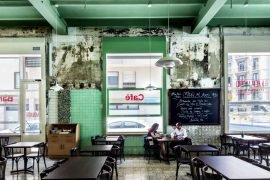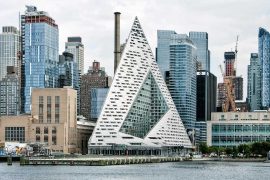[dropcap letter=”A”]
small detail, a postcard that Picasso (1881-1973) addressed to his friend, the poet Guillaume Apollinaire, evidences the meeting between him and Francis Picabia (1879-1953) in a bullfighting event in Barcelona, when the Malaga born had returned to the city with the Ballets Russes and the second had become a refugee, in the middle of the First World War, and published the avant-garde magazine 391. It was in 1917, a year when everything seemed possible in Catalonia, Spain and the world, at the zenith of the Great War and in a country shaken by the war in spite of its proclaimed neutrality. And in which manner!
 The peninsula experienced a deep social, political, economic and military crisis. What happened, especially during the summer, defined the Spanish future: the lack of understanding between the different agents involved paved the way for the gunplay of the coming years and the establishment of the dictatorship of Primo de Rivera in 1923. The two painters, the one from Malaga and the French, son of Hispanic-Cuban, did not suffer from this fact, though their artistic proposals are the fruit of a moment, of each moment, because their brush does not forget what surrounds them.
The peninsula experienced a deep social, political, economic and military crisis. What happened, especially during the summer, defined the Spanish future: the lack of understanding between the different agents involved paved the way for the gunplay of the coming years and the establishment of the dictatorship of Primo de Rivera in 1923. The two painters, the one from Malaga and the French, son of Hispanic-Cuban, did not suffer from this fact, though their artistic proposals are the fruit of a moment, of each moment, because their brush does not forget what surrounds them.
Both, however, created from a particular and galloping individualism. No gregariousness. And that is why one might think that showing them face to face, facing them, would be somehow a waste of time, a useless exercise. Not at all. This is what Aurélie Verdier, curator of the Georges Pompidou Center, wants to deny. There actually is a possible dialogue, since their points of connection are found, as much as same divergences that become interesting, once considered.
The proposal of Commissioner Verdier can be seen at the Garriga Nogués House of the Mapfre Foundation of Barcelona until January 13th -hurry, then- in Picasso / Picabia. Painting in Question. Thanks to 150 works, including documents, prints, drawings and paintings, the exhibition narrates the approach to both artists throughout their lives. Picabia admired Picasso. He, however, called himself Picabia “when he had something to reproach himself for, because the Frenchman always pointed out that he did not know how to do enough”, according to Verdier. How much is a boutade, that is something difficult to know.
In the exhibition, the artistic intersection, through nine thematic sections, starts with cubism, created by Picasso and Braque at the beginning of the twentieth century, and of which Picabia does not participate. It continues through the influence of the most extreme Dadaism, of which the latter was a fundamental figure, and that, on the other hand, the Spaniard did not embrace. They coincide in themes such as the figures of women with mantillas and the bulls, each one with his own gaze. They also live a short distance away, but without contact on the Costa Azul, and while Picasso focuses his latest works on the human figure and portrait, the Frenchman takes a much less figurative path.
And despite the obvious distance of approaches, a walk through the show leaves us an aftertaste of a kind of interstitial contact, a shared je ne sais quoi. This is the first occasion in which a dialogue between Picasso and Picabia is established, but not between the artist from Malaga and other painters, having already been confronted, among others, with Dalí, Rusiñol and Degas. In this case, it is particularly interesting to contemplate the position that each of the painters establishes with the movements to which they are related or not, Cubism and Dadaism, and how both leave Surrealism aside. The show could be seen earlier at the Musée Granet in Aix en Provence, which co-produces it, and is part of Picasso-Mediterranean, a major international project promoted by the Picasso Museum in Paris.
This is undoubtedly one of the most interesting proposals to get lost during these days. In order to leave doubt aside, and to know in advance that one will not be disappointed by the show, one can have a glance to the virtual tour that the Mapfre Foundation offers. Just one look at the Portrait of Dora Maar by Picasso, painted in 1937, and Picabia’s Habia II, painted the following year, gives a clue about the itinerary. The duel of paintbrushes does not end with the victory of one over the other, but complements them and enlarges them.

